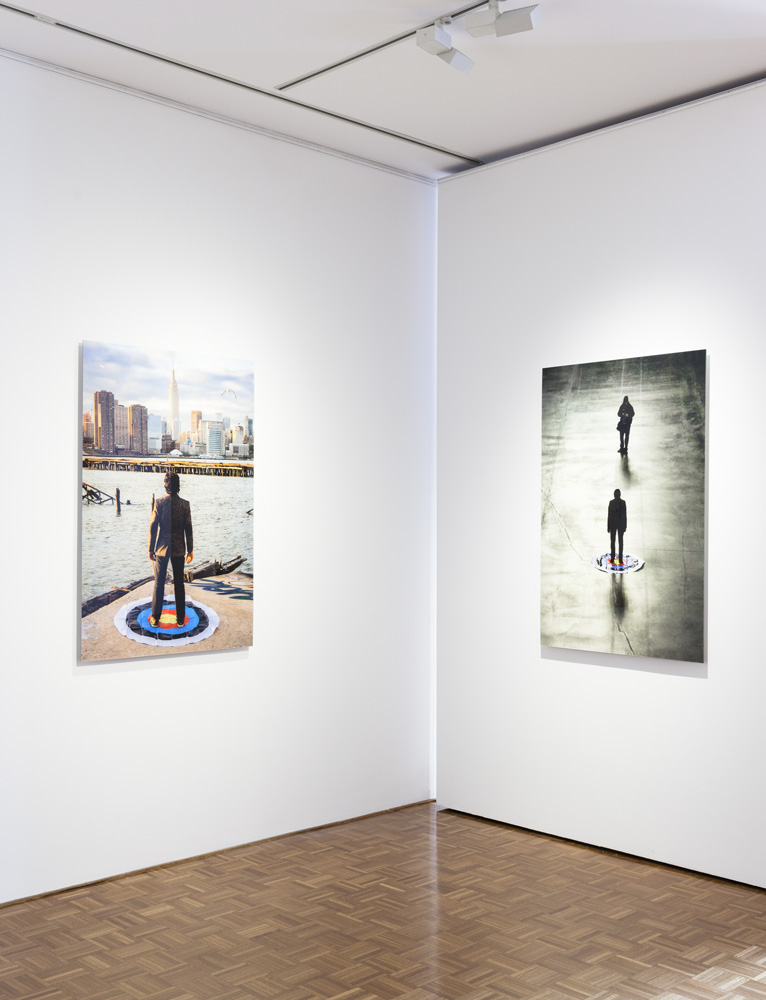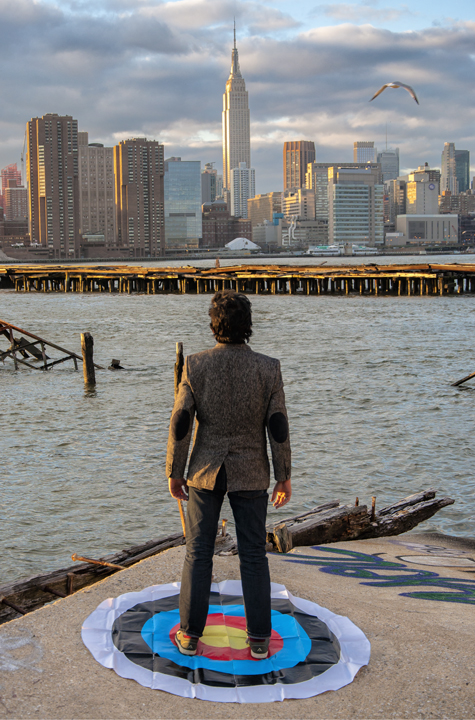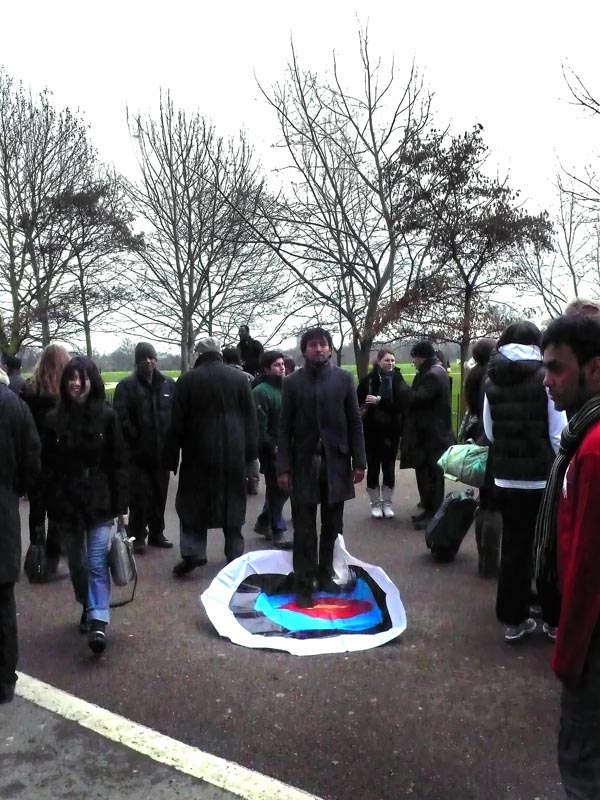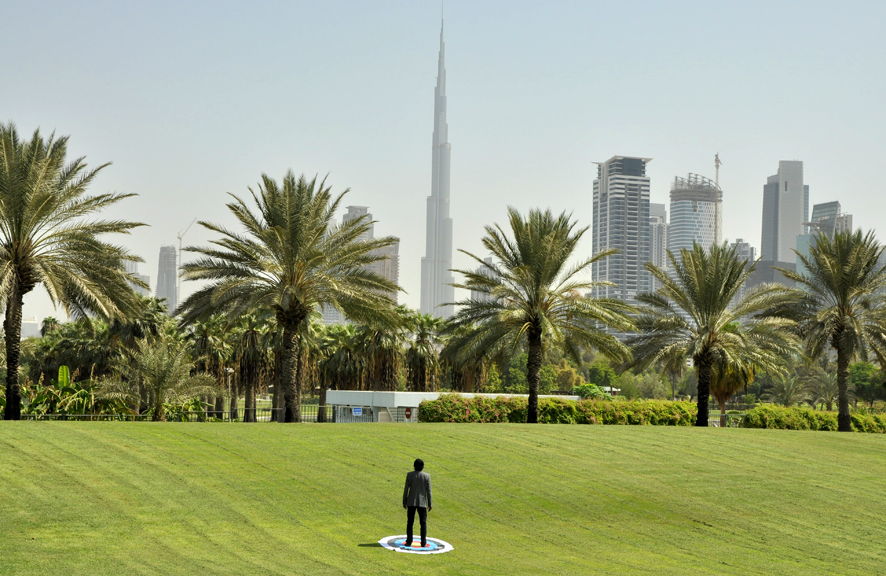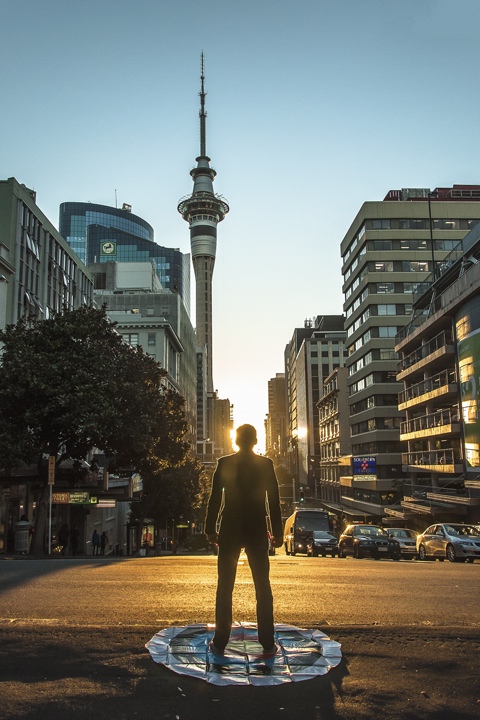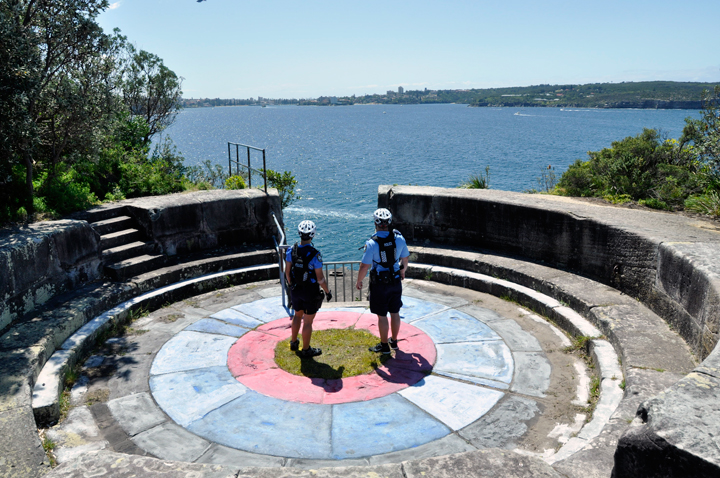The Soft Target performances examine the construction of a cultural identity in relation to iconic sites and structures on a tourist map, which have been marked as ‘soft targets’ since the terrorist attack on the World Trade Centre on September 11, 2001. Familiar markers of the history and iconography of Eastern and Western cultures, the rise and fall of such sites and structures in the discourse of cultural identity construct presents a model of ongoing deterioration and preservation. This implies a particular aesthetic sensibility: one that is imbued with a sense of mortality, melancholy, and nostalgia. Echoing Susan Sontag’s notion that “the camera makes everyone a tourist in other people's reality, and eventually in one's own,”[1] the Soft Target photo-performances began in 2011 as an investigation of my position as a Muslim Pakistani artist in diaspora.[2] It is an ongoing journey where I am the traveller, the observer, and the one who is being observed from the ground and from above.
In Soft Target I appear with my target at various locations around the world, including Sydney, New York, Beijing and Dubai, where my body speaks in John Cage’s silence and reverberates in dhikr, a remembrance. Some of the structures shown in the series are popular tourist spots or sites of human achievement and failure. Some stand erect, rising with exposed grids, whereas others kiss the earth covered with arabesque patterns and create their own horizon. Glass, concrete, marble and brick; square, circle and rectangle; line, curve and dot; every material, shape and size is on view, bathing in awe of the shimmering daylight or twinkling under the moon and stars.
The performances simultaneously address fixed and shifting authority; investigate the current nature of power, stereotype, and the politics of freedom of speech; and question the current desire for and rhetoric of agreement and consensus in a pluralist society. The resulting photographs are markers of time and are both the message and the medium. It is up to the viewer as to how they interpret the image and experience. This shifting interpretation, misinterpretation of meaning from a site first to an individual, and then to a collective, is the essence of the resulting photographs of the performances.
[1] Susan Sontag, On Photography (New York: Penguin, 2008 [1977]), 75.
[2] The Soft Target are ‘photo-performances’, a term coined by Ann Marsh; they “are presented as a series and document a performance process.” For Marsh a photo-performance emerges from the term performative photography which is a “particular genera where the artists him or herself is pictured. These images may be considered in relation to artist’s self-portraiture but many of the photographs appear to reference the ephemeral history of performance art and/or draw upon this to produce works in different media.” Marsh, Performance Ritual, 51.
MEDIA COVERAGE:



























